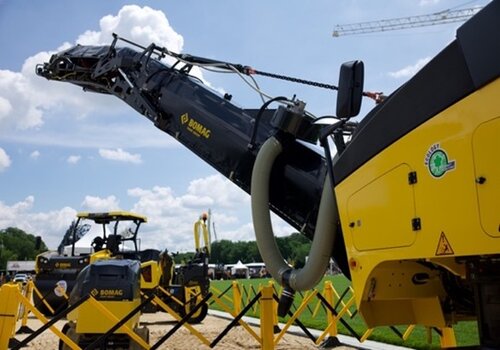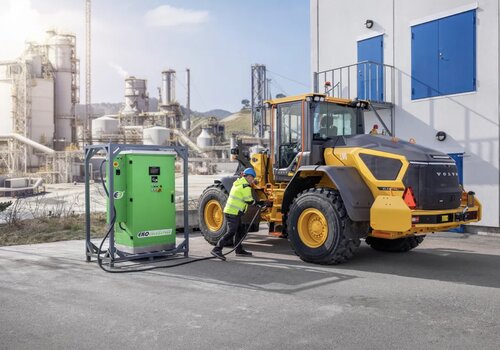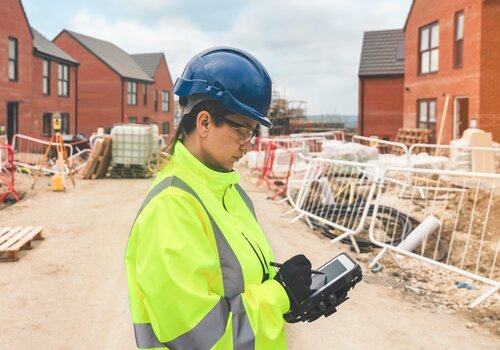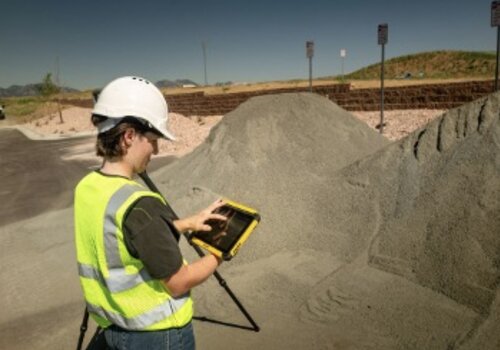As the construction industry continues to innovate, sustainable technology is becoming a cornerstone of modern project management. One critical aspect of this evolution is the way construction sites are lit. Traditional diesel generators, long the staple for site lighting, are being replaced by more sustainable options such as solar power, batteries, hydrogen fuel cells, and even tethered drones. These advancements promise not only to reduce environmental impact but also to offer practical and economic benefits for contractors.
SOLAR POWER: HARNESSING THE SUN'S ENERGY
Solar-powered lighting systems are becoming increasingly popular on construction sites due to their ability to provide renewable energy with minimal environmental impact. These systems typically consist of solar panels, batteries and energy-efficient LED lights.
Opportunities:
- Cost Savings: Solar lighting can significantly reduce fuel costs associated with diesel generators. Over time, the investment in solar technology can pay off through savings on fuel and maintenance.
- Reduced Emissions: By eliminating the need for diesel, solar lighting reduces greenhouse gas emissions, contributing to a cleaner environment.
- Energy Independence: Solar systems can operate independently of the grid, providing a reliable lighting solution even in remote locations.
Challenges:
- Initial Investment: The upfront cost of solar lighting systems can be high, though this is mitigated over time by reduced operating expenses.
- Weather Dependency: Solar panels require sunlight to generate power, which can be a limitation in areas with frequent overcast conditions or during winter months with shorter daylight hours.
Getting Started:
Assess Site Needs: Evaluate the lighting requirements of your site, including the area to be lit and the duration of use.
Select the Right System: Choose a solar lighting system that meets your specific needs. Factors to consider include panel efficiency, battery capacity and light output.
Consult Experts: Work with suppliers and experts to design and install an optimal system for your site.
BATTERY-POWERED LIGHTING: FLEXIBLE AND EFFICIENT
Battery-powered lighting systems offer another sustainable alternative. These systems typically use rechargeable lithium-ion batteries to power LED lights.
Opportunities:
- Portability: Battery-powered lights are highly portable and can be easily relocated as project needs change.
- Silent Operation: Unlike diesel generators, battery-powered lights operate silently, reducing noise pollution on site.
- Efficiency: LED lights are highly efficient, providing bright illumination with lower power consumption.
Challenges:
- Limited Runtime: Battery life can be a limiting factor, requiring frequent recharging or battery swaps to maintain continuous lighting.
- Recharge Infrastructure: Establishing a reliable system for recharging batteries can be challenging, particularly on larger sites.
Getting Started:
Evaluate Battery Life: Choose lights with sufficient battery life to meet your site’s needs. Consider systems with quick-change battery packs for uninterrupted operation.
Plan for Recharging: Set up a dedicated area for recharging batteries, ensuring access to power sources.
Monitor Usage: Keep track of battery usage and performance to optimize the recharging schedule and prevent downtime.
HYDROGEN FUEL CELLS: A CLEAN ENERGY SOLUTION
Hydrogen fuel cells offer a clean and efficient way to generate power for site lighting. These cells produce electricity through a chemical reaction between hydrogen and oxygen, with water as the only byproduct.
Opportunities:
- Zero Emissions: Hydrogen fuel cells produce no harmful emissions, making them an environmentally friendly option.
- High Efficiency: These cells are highly efficient, providing reliable power over extended periods.
- Scalability: Fuel cell systems can be scaled to meet the specific power needs of different sites.
Challenges:
- Hydrogen Supply: Access to hydrogen fuel can be limited and setting up a supply chain may require significant effort.
- Cost: The technology is still relatively expensive compared to more established solutions like solar and battery power.
Getting Started:
Research Suppliers: Identify reliable suppliers of hydrogen fuel cells and hydrogen gas.
Plan Logistics: Develop a plan for transporting and storing hydrogen on site safely.
Training: Ensure that your team is trained in the safe handling and operation of hydrogen fuel cells.
TETHERED DRONES: INNOVATIVE AND VERSATILE
Tethered drones equipped with powerful lights represent an innovative solution for site illumination. These drones are connected to a ground-based power source, allowing them to stay aloft for extended periods without the need for battery changes.
Opportunities:
- Mobility: Drones can provide lighting in areas where traditional lights are difficult to deploy.
- Adjustable Height: The height of the drone can be adjusted to provide optimal lighting for different tasks.
- Versatility: In addition to lighting, drones can be equipped with cameras and sensors for site monitoring.
Challenges:
- Weather Sensitivity: Drones can be affected by adverse weather conditions, including high winds and rain.
- Regulations: The use of drones is subject to regulatory constraints, which can vary by location.
Getting Started:
Check Regulations: Ensure that you understand and comply with local regulations regarding drone use.
Choose the Right Drone: Select a drone with adequate lighting capacity and tethering options.
Train Operators: Train your team to operate and maintain the drones safely and effectively.
STEPS TO GET STARTED
For many contractors, the best approach may be to integrate multiple sustainable lighting technologies to take advantage of their respective strengths. Here are some steps to get started:
Conduct a Site Assessment: Evaluate your site to determine the best combination of lighting technologies based on the specific conditions and requirements.
Develop a Lighting Plan: Create a comprehensive plan that outlines the deployment of each lighting technology, taking into account factors such as placement, power needs and backup options.
Pilot Programs: Start with pilot programs to test the effectiveness of different technologies on a smaller scale before full deployment.
Monitor and Adjust: Continuously monitor the performance of your lighting systems and adjust as needed to optimize efficiency and reliability.
LOOKING AHEAD
Sustainable lighting technologies offer construction contractors a way to reduce their environmental impact while enhancing operational efficiency. By embracing solar power, batteries, hydrogen fuel cells and tethered drones, contractors can create safer, more sustainable project sites. The transition to these technologies may present challenges, but with careful planning and implementation, the benefits can far outweigh the obstacles. As the industry continues to evolve, staying ahead of these trends will position contractors for long-term success.
Photo credit: AMINKOREA/BIGSTOCKPHOTO.COM












